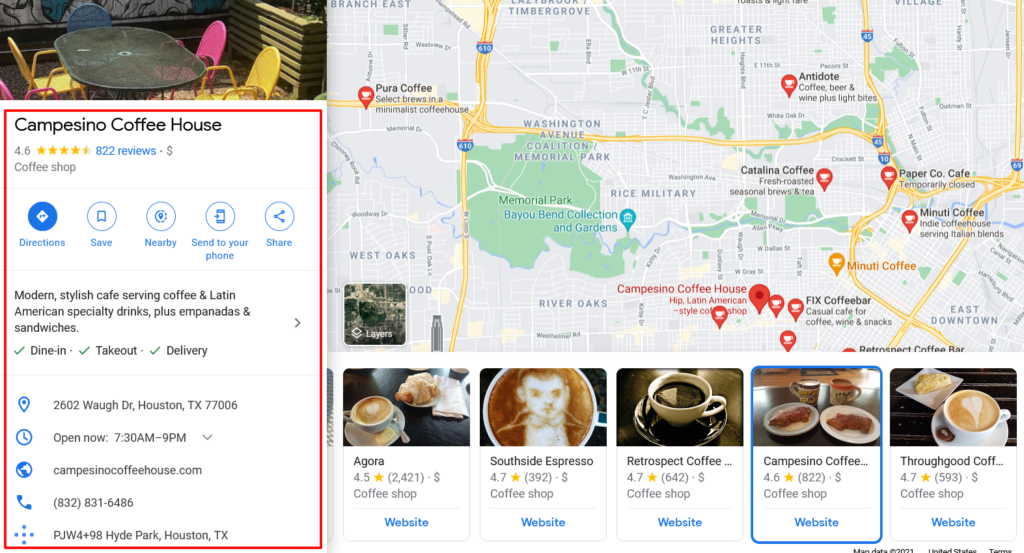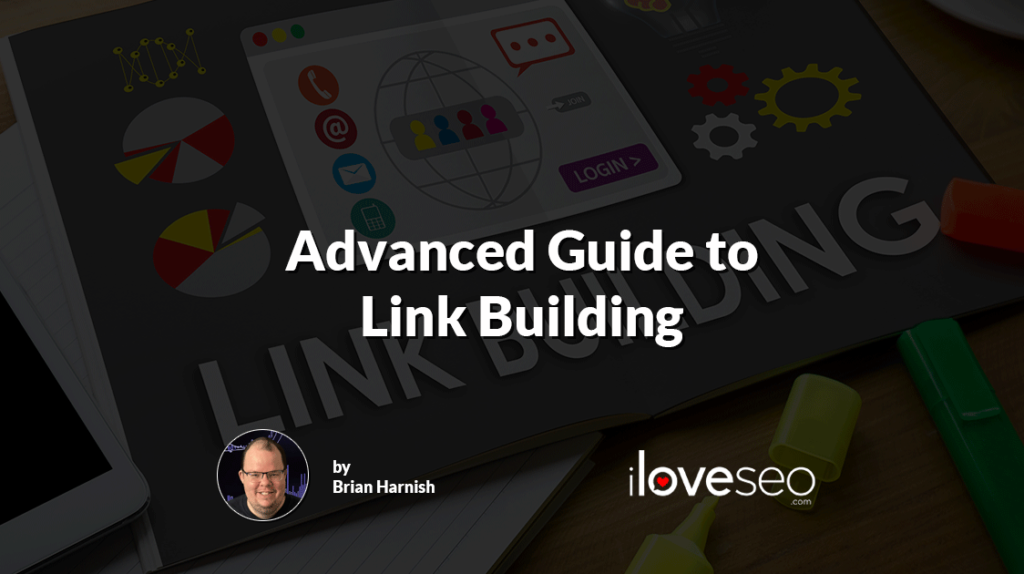If you’re new to SEO or simply don’t have much link building experience, the prospect of link building can be an intimidating one. From link velocity to link reclamation to time-consuming techniques, many guides to link building are overwhelming for those who just need to learn the basics.
That’s why we’ve created this beginner’s guide to link building. Here, you’ll learn about the essential concepts of link building and how to execute them easily, effectively and quickly.
What Is Link Building?
First thing’s first: What exactly is link building, anyway? As one of the core pillars of SEO as a whole, it must be a pretty complex concept, right? Not necessarily.
In short, link building describes the process of acquiring backlinks from other sites to yours:

That’s it! If you successfully get another site to add a link to one of your pages, then you’ve just engaged in link building.
Why Is Link Building Important?
As with all aspects of SEO, link building is important because of the value that search engines place on it. It comes as no surprise that this is especially true for Google, one of the first search engines to prioritize links andkeywords instead of just keywords alone.
As Google founders Sergey Brin and Lawrence Page stated in the 1998 Stanford paper that marked the search engine’s debut:
In other words, a page about dog treats won’t rank highly just because it contains the phrase dog treats hundreds of times. Instead, it will rank highly if other reputable websites link to it and it includes a contextually appropriate number of keywords. And with the continued advancement and refinement of Google’s algorithms, that’s even more true today than it was in 1998.
The takeaway? If you care about SEO, then you need to care about link building too. In addition to top-notch content and relevant keywords, a portfolio of high-quality backlinks is one of the core components of a successful SEO strategy.
How Do I Get Started With Link Building?
Now you know what link building is (getting links from other sites) and why link building is important (search engines love links!). But as a beginner, you’re still probably wondering how you can get started with link building on a practical level.
It all comes down to trial, error and patient persistence.
Learn About Bad Links
In order to build high-quality links, you first need to know what constitutes bad links, i.e. links that lower search engines’ opinion of your site.
These are often links considered to be part of link schemes. As Google explains, some examples of link schemes include:
- Buying links that pass PageRank.
- Excessive link exchanges (cross-linking between sites).
- Expansive article marketing or guest posting campaigns that make use of keyword-heavy anchor text.
- Automatically generated links.
- Requiring links as a part of a contract or legal agreement.
Also remember that Google is smart enough to detect any kind of spammy links, so don’t be tempted to flood discussion forums with links or submit your site to dozens of low-quality directories just because doing so doesn’t technically qualify as a link scheme. Google refers to these types of links as unnatural links, and they’ll only serve to hurt your site’s rankings.
Once you know what bad links are, you’ll be able to avoid them and keep your site’s reputation squeaky clean. And if you ever do come across a low-quality link to your site that you don’t want Google to take into consideration, simply use the nofollow attribute.
Learn About Good Links
We’ve established why bad links are, well, bad, but what makes good links good? It all comes down to a few key concepts:
- Authority: A page gains authority in Google’s eyes when it establishes itself as a reliable source of information on a given topic. This can be any topic under the sun, from celebrity gossip to quantum physics. If a link to your site comes from an authoritative site, Google is more likely to view it as good.
- Relevance: To provide users with the best results possible, Google is highly concerned with relevancy. If a link to your site comes from one that’s topically relevant, it’s more likely to be viewed as high-quality.
- Naturalness: If you’ve been keeping up with Google’s algorithm updates over the last few years, then you know that context and naturalness are top priorities. The search engine’s machine learning models are carefully tuned to determine whether a link is natural (i.e. genuine) or unnatural (i.e. spammy), and the more natural-seeming it is the better.
- Anchor text: Much like the presence of backlinks themselves, each link’s anchor text should be natural and not keyword-stuffed. To find out more, you might wish to brush up on anchor text SEO.
As with all of the factors that influence Google’s rankings, no one of those concepts will be solely responsible for determining whether a link is good or not. Instead, each one will play a role in forming Google’s opinion.
The lesson? Throughout the course of your link building strategy, you need to value authority, relevance, naturalness and anchor text alike when deciding which links to pursue and how you’d like them to be formatted.
Focus on Shareability
It’s true that creating high-quality content will increase your chances of gaining backlinks, but it’s important to view shareability as a key aspect of quality.
After all, an article can be well-researched, factually accurate and thorough, but it wouldn’t be considered shareable unless it compels readers to show others.
So what makes an article shareable? That’s subjective, but it generally comes down to elements that are either unique, eye-catching or both. For example:
- aesthetically pleasing graphics;
- interesting statistics;
- appealing photos;
- easy-to-read infographics;
- attention-grabbing quotes (hint: a Click to Tweet button makes quotes extra easy to share); and
- valuable takeaways.
Those are the types of things that people are compelled to share on their social media feeds, send to their friends or cite in their own content, so be sure to incorporate them into your content whenever possible.
Build Genuine Relationships
The saying “it’s not what you know, it’s who you know” is oft repeated for a reason. The same applies to SEO, particularly in terms of backlinking. This is because Google wants links to be based on genuine recommendations and endorsements between websites, not on transactions or spam.
The best way to fulfill that wish is to create and nurture genuine relationships with key players in your vertical. These can include people like:
- industry journalists and editors;
- bloggers;
- social media influencers;
- owners of related websites; and
- employees of related organizations.
If you’re not sure where to start, begin by simply conversing with some of those people on social media. Don’t jump right into self-promotion, though—just have authentic discussions about topics relevant to your site.
Then once you’ve built a casual rapport or at least made your name more visible, try emailing those same people when you’re about to publish an interesting article or release a new product. Refrain from directly asking for a backlink, and instead just share what you have to offer. If they like it, they may link back to it.
In the same vein, you can indirectly strive to get backlinks from thought leaders and influencers by adding some ego bait to your site’s content. In other words, mention them in a complimentary way in order to tempt them to engage with and link back to your site.
These techniques likely won’t yield instant results, but they will help you achieve more potent long-term results that Google will value even more.
Get Local
If the website you’re optimizing is associated with a business that has a brick and mortar location, you can gain more backlinks and boost traffic by participating in local directories and building connections with nearby residents.
You’d do well to start by optimizing Google My Business (GMB), Google’s own database of local business listings. When you do so, a GMB listing for your business (complete with a link back to its website) will show up on both Search and Maps:
Once your GMB listing is set up, you can also connect with nearby residents and visitors by:
- getting your business listed on reputable local directories;
- promoting your social media posts to a specific geographic area;
- communicating with local influencers; and
- learning how to start a Facebook group for your brand.
All of those activities will increase your chances of earning organic backlinks and expanding your business’ reach.
Ask for Help From Your Network
Link building guides often place a large amount of emphasis on optimizing outreach, and rightfully so. But for beginners in particular, it’s important to remember that your existing network of colleagues, friends and contacts can be leveraged too.
It’s as simple as this: Do colleagues associated with the website you’re optimizing have Twitter accounts? Then you can ask them to help by linking to new blog posts. Do your LinkedIn contacts sometimes publish links to various articles? Then you can shoot them a message to see if they’ll post a link to one of yours.
As long as your network’s posts don’t appear spammy or ingenuine, this is a fantastic way to take advantage of the connections you already have.
Get Inspiration From Competitors
Every beginner’s link building strategy needs to include basic competitor link analysis. In simpler terms, you should find out which backlinks your competitors have and try to get them for your site too.
But how can you tell where your competitors are getting their links from? With Ahrefs’ free Backlink Checker it’s nothing short of a breeze.
Just enter a competitor’s URL and you’ll soon see a breakdown of their backlink profile:
Just like that, you can gain a valuable look at your competitors’ most important backlinks and start using that information to conduct targeted outreach and build more links to your own site.
Track Your Progress
Last but certainly not least, it’s vital to track your site’s progress so that you can ascertain which of your link building tactics are working and which need to be improved.
The easiest way to do so is with the help of a free traffic analysis tool like Similarweb. To use this tool, all you have to do is enter your site’s URL and you’ll see detailed information about its traffic and performance:
On Similarweb, this information includes total visits, traffic by country, top referring sites, top referring social media platforms and more:
Once you’re able to see where all your traffic is coming from, you’ll also be able to keep an eye on your link building efforts’ progress over time.
Effective Link Building: Not Just for Experts
Link building can involve advanced tactics, but it doesn’t necessarily need to. It’s possible for even complete beginners to start building a well-rounded backlink portfolio, and now you know how to do it.
So don’t get intimidated by complex link building software or niche terminology. Instead, use the techniques outlined here to start getting genuine links that search engines will love.
Image credits
Graphic by author / July 2021
Screenshots by author / July 2021










